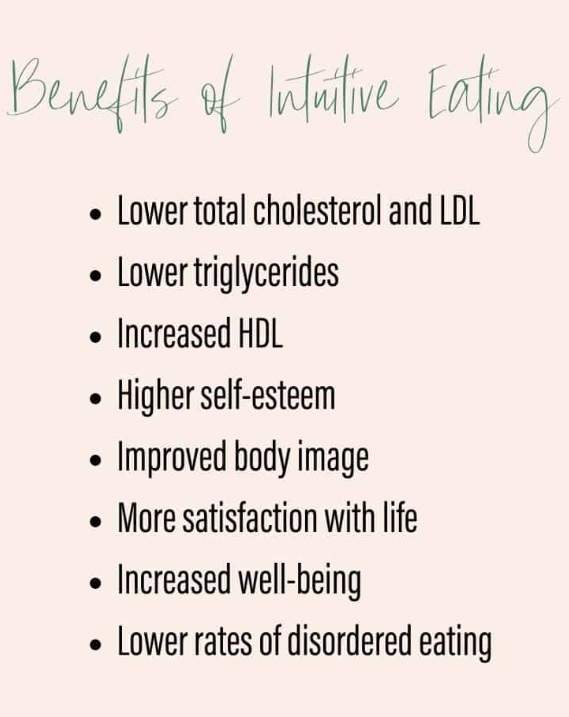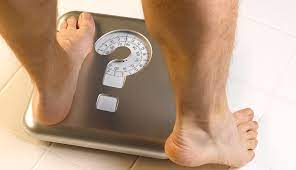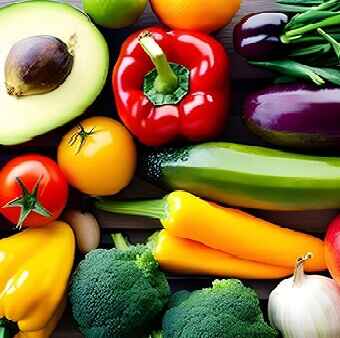Table of Contents
The Benefits Of Eating More Fruits And Vegetables For Weight Loss
Eating more fruits and vegetables can help you reach your weight goals. They are low in calories and packed full of essential vitamins, minerals, fiber and antioxidants that can aid weight loss efforts.

Fruits are also high in water, a satiating nutrient that can keep you fuller for longer. This encourages people to eat less even when not on a calorie-restricted plan.
Fiber
Eating more fruits and vegetables not only benefits your health, but it may also aid weight loss. These produce contain essential nutrients like fiber – an nutrient which helps you feel satiated for longer, which is key in weight management.
Get your daily serving of fiber by increasing the amount of whole grains, veggies, fruits and legumes in your diet. Be sure to introduce these changes gradually so your digestive system has time to adjust.
A high-fiber diet can help regulate your blood sugar levels, suppress hunger cravings and keep you feeling full for longer. Furthermore, it has been known to prevent heart disease, diabetes and cancer.
Weight-watchers may find this especially beneficial, as it helps them feel fuller for longer and eat fewer calories overall. Furthermore, it prevents them from overeating or indulging in processed, high-calorie foods that have been stripped of their fiber content.
However, it’s essential to remember that a fiber-rich diet does not guarantee weight loss. Instead, the pounds may come from replacing high-calorie, low-fiber foods with lower calorie alternatives.
For instance, a high-fiber diet can reduce your fat consumption by up to 40%. That’s because when calories are absorbed in the stomach instead of being sent directly to the liver for storage, they take longer time to convert into glucose which doesn’t spike insulin levels.
Another advantage of fiber is that it helps regulate your bowel movements. That way, softer stools will pass through your colon more quickly.
Studies have even discovered that a high-fiber diet can be effective for treating diarrhea and constipation. This is likely because it draws water into your colon, softening stools to promote regularity while decreasing exposure of harmful bacteria in your intestines.
Increase your fiber intake with simple changes: add more veggies and fruits to meals; switch over from starchy vegetables to non-starchy options; and incorporate whole grains like quinoa, barley or brown rice into your diet for added fiber benefits.
Water
Eating more fruits and vegetables not only reduces the risk of chronic diseases like heart disease and high blood pressure, but it can also aid weight loss. Fruits and vegetables contain fiber, vitamins, minerals, and other substances which may lower obesity-related health problems. Eating more produce also makes you feel full faster while helping maintain a healthy weight.
One study discovered that eating more than two servings of fruits and vegetables per day significantly decreased the risk of overweight or obesity among adults – particularly for women who consumed five or more portions of these foods daily.
Researchers have also discovered a correlation between eating more than two servings of fruits and vegetables daily and an overall decreased risk of stroke and heart disease, though this doesn’t prove that these foods are directly responsible for these issues. Furthermore, since these foods tend to be lower in caloric content than other types of food, increasing your fruit and veggie consumption can still help you maintain a healthy weight.
Another advantage to eating more fruit and vegetables is their generally lower calorie content compared to other food items like meats, fish, or cheeses. Vegetables in particular often have plenty of water and fiber in them which make them filling but low in kilocalories.
Eating more vegetables can also make you feel fuller, as their water content absorbs calories from other food sources. Nutritionist Lori Lander-Canseco suggests that swapping a grilled chicken breast, potato and butter meal for an omelet with vegetables (such as spinach, mushrooms, tomato or bell pepper) will save about 310 calories.
Drinking plenty of water throughout the day not only hydrates you, but it also helps flush out waste and toxins from your system, according to Jennifer McDaniel M.S., R.D.N., C.S.S.D., L.D. – registered dietitian nutritionist and owner of McDaniel Nutrition Therapy –
Nutrients
Eating more fruits and vegetables can aid weight loss efforts, as they are low in calories, packed with essential nutrients, and beneficial for overall wellbeing.
According to one study, women who consumed more vegetables and fruits had lower levels of cholesterol and body fat than those who consumed fewer of these nutritious foods. Furthermore, those who ate more of these nutritious items appeared to have a higher metabolism than those who consumed fewer servings.
Vegetables and fruits contain fiber, which aids digestion and makes you feel full faster. Furthermore, they’re low in calories so can easily be added to your diet to help regulate caloric intake throughout the day.
Fruits and veggies can also help you stay hydrated by providing you with plenty of water to drink before meals. Eating these nutritious items before meals will make you feel fuller for longer.
Fruits that are high in water content include watermelon, cantaloupe and honeydew. Furthermore, these fruits are packed with antioxidants which may benefit your overall wellbeing.
According to a study published in the American Journal of Clinical Nutrition, eating more fruits and vegetables may reduce your risk for developing obesity. However, they cautioned that this effect is unlikely to last permanently.
Fruit and vegetables provide a nutritional boost, plus they’re packed with vitamins and minerals. Consuming more of these can help support a healthy immune system, improve sleep quality, reduce the risk of cancer or heart disease, as well as provide other health benefits.
If you’re looking for a convenient and tasty way to incorporate more fruits and vegetables into your diet, replace high-calorie snacks with healthier alternatives. For instance, instead of reaching for that bag of chips, why not enjoy some fresh fruit or cut-up vegetables along with some low-calorie dip?
Losing weight is easy when you substitute higher-calorie food with lower-calorie alternatives. To maximize success, replace some of your meals with fruits and vegetables, as well as incorporate some exercise into your daily regimen.
Satiety
Eating more fruits and vegetables is an excellent way to cut back on calories consumed. Plus, they contain high fiber levels which helps you feel fuller for longer and suppresses hunger cravings as well.
Fiber not only benefits your body and digestive system, but it also helps stabilize blood sugar levels. This makes weight loss easier since your body doesn’t have to work as hard to process food as quickly.
Studies have repeatedly demonstrated that eating high-fiber foods like fruits and vegetables increases feelings of satiety. This may be because these items are more filling and provide your body with plenty of water, helping you feel fuller for longer.
Another advantage to eating more fruits and vegetables is their low fat content, meaning you won’t feel guilty for indulging. Furthermore, fruits and veggies contain higher levels of antioxidants which may help combat free radical damage which could otherwise lead to diseases.
Many people are familiar with the concept of satiety, but may not realize that it extends beyond simply feeling full. Satiety is actually a complex and intricate process involving physical processes like digestion as well as psychological elements like memory.
Researchers have explored the physiological and psychological basis of satiation, as well as its connection to eating behavior. Although these processes are complex, they provide insight into how you feel when full and how your body responds to different foods.
There are two primary forms of satiation: sensory-specific satiety (SSS) and alimentary alliesthesia (AA). The former involves decreased activity in areas associated with food pleasure; the latter leads to feelings of heaviness or discomfort.
At the end of a meal, your taste receptors send signals to your brain that indicate when you’re satisfied. This signal is further reinforced by signals from your stomach such as ghrelin and pancreatic secretion.
These signals influence how your brain processes information to determine whether or not you’re hungry. While these can be hard to interpret when distracted by technology, practicing mindfulness around food consumption will help you pay more attention to feelings of satiety.




